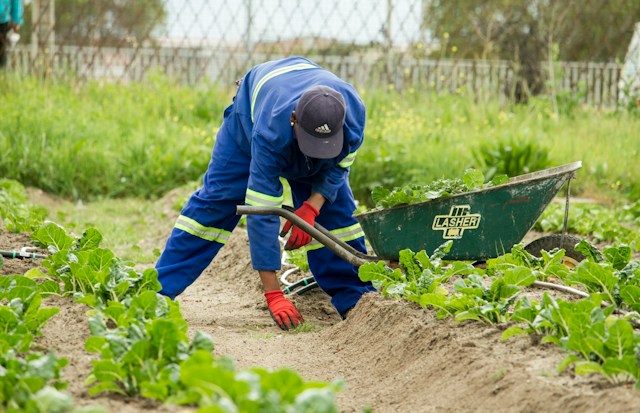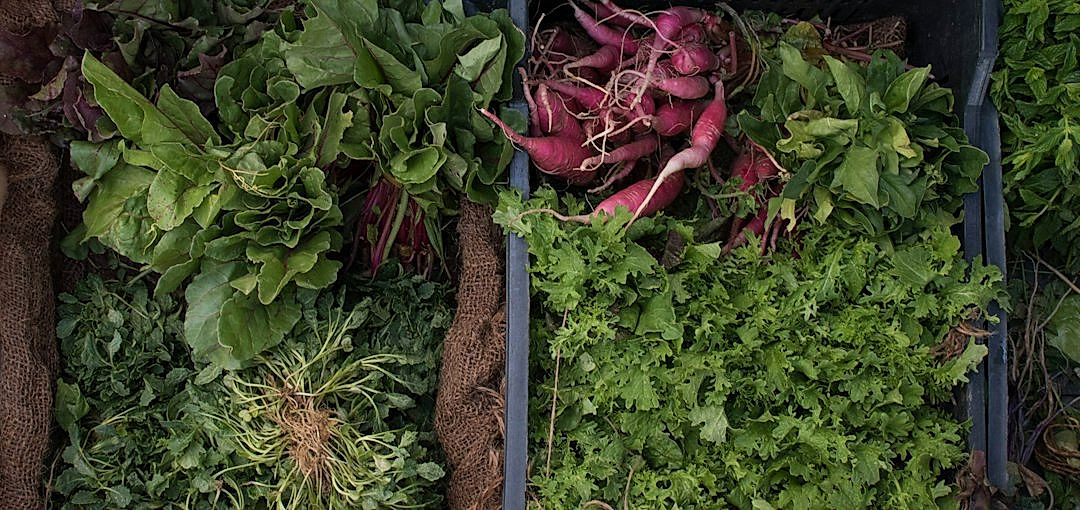Ensuring the safety and health of agricultural workers is of paramount importance in the realm of farming.
The agriculture industry faces unique challenges when it comes to maintaining safe working conditions, due to the nature of the work and the environments in which it takes place.
Poorly managed farm safety can lead to severe consequences, including injuries and even fatalities among the workforce.
Furthermore, low standards of worker health can lead to reduce productivity and morale, impacting the success of the farm.
On this important topic, we will focus on actionable strategies and best practices.
From the basic understanding of farm hazards to comprehensive safety policies, we delve into crucial aspects concerning safety and worker health in the produce farming industry.
Contents
- Produce Farm Safety And Worker Health Practices
- 1. Regular use of Personal Protective Equipment (PPE)
- 2. Enforcement of Handwashing and General Hygiene Protocols
- 3. Regular equipment maintenance and safe use education
- 4. Strict adherence to pesticide use regulations
- 5. Regular worker health checks and screenings
- 6. Provision of adequate rest and breaks
- 7. Implementation of Injury Prevention and First Aid Training
- The Bottom Line
Produce Farm Safety And Worker Health Practices
1. Regular use of Personal Protective Equipment (PPE)
Personal Protective Equipment (PPE) serves as a crucial line of defense between farm workers and potential health hazards.
On produce farms, workers often come into contact with chemicals, machinery, and various environmental elements that pose potential threats to their wellbeing.
PPE can include wearables like gloves, safety glasses, facemasks, coveralls, and boots designed to provide protection.
These items block harmful substances from penetrating the skin, entering the respiratory system, or damaging the eyes.
Regular use of PPE is therefore imperative in safeguarding the health of farm workers.
The proper and regular utilization of PPE significantly reduces the risk of injury and illness in the agricultural workforce.
However, simply providing workers with PPE is not sufficient to ensure their safety.
PPE must be the correct type to provide protection against the specific risks encountered in each individual’s role
Worker training on proper PPE usage is equally as important as the physical provision of these safety accessories.
Farm owners and managers should offer comprehensive training sessions in order for their workforce to understand when and how to use PPE, and the importance of regular maintenance and replacement.
Training also enables workers to make informed decisions regarding PPE, based on their understanding of the risks involved in their tasks.
Management should enforce the regular use of PPE, incorporating it as a non-negotiable part of the farm’s safety culture.
The use of PPE should not be seen as optional or as a sign of personal weakness, but rather as an essential practice for maintaining a safe working environment.
PPE contributes to reducing worker exposure to hazards, which ultimately leads to better worker health, a safer working environment, and a more productive agricultural industry.
Overall, the regular use of Personal Protective Equipment provides a tangible method for farm workers to take control of their personal safety and health, ensuring they can continue to contribute their important work in the farming sector.
2. Enforcement of Handwashing and General Hygiene Protocols
Safe agricultural practices start with the enforcement of handwashing and other general hygiene protocols.
The importance of this step cannot be overemphasized given that dirty hands are major carriers of harmful organisms that can compromise both food safety and worker health.
It is fundamental to establish and uphold rigorous handwashing protocols, and to provide the needed resources, such as running water, soap, single-use towels, and hand sanitizers.
Staff training on how to wash hands properly, when to do so, and the possible consequences of non-compliance is similarly crucial.
By educating employees about the broad-ranging impacts of maintaining good hygiene, farms can not only improve produce quality but also boost the health status of their workforce.
General hygiene protocols, on the other hand, should include elements like maintaining clean workspaces, properly disposing of waste, regular cleaning of tools and equipment, and the proper use of personal protective equipment.
Here again, training and education are necessary to ensure that every staff member is thoroughly familiar with these protocols and understands their significance.
Aside from the preventative role these measures play in minimizing the risk of foodborne diseases, they are also instrumental in controlling the spread of infectious diseases within the farm workforce.
Management should consider the establishment of a multidisciplinary hygiene committee with representatives of all the different divisions of the farm.
This committee would be tasked with keeping hygiene standards up-to-date, overseeing their execution across all operations, and monitoring compliance.
Regular inspections and audits are another advisable practice to ensure the efficacy of handwashing and general hygiene protocols.
They provide an opportunity to identify areas needing improvement, rectify deficiencies and reinforce the relevance of adhering to established protocols.
Another factor to consider is the role of provision and upkeep of adequate sanitation facilities.
This not only boosts staff morale and productivity, but also plays an essential role in preventing diseases attributable to poor sanitation practices.
This could take the form of regular, scheduled bathroom breaks, clean toilets and handwashing stations, provision for safe drinking water, and daily cleaning schedules for these facilities.
Thus, the adoption and consistent enforcement of handwashing and general hygiene protocols are key pillars in promoting health and safety within the farming industry.
3. Regular equipment maintenance and safe use education
In the realm of produce farm safety and worker health practices, ensuring regular equipment maintenance and safe usage education is crucial.
Due to the nature of farming which involves heavy machinery and potentially dangerous equipment, strict attention must be paid to its proper functioning.
One of the first steps towards achieving this is establishing a regular maintenance routine for all the equipment used on the farm.
This routine should encompass both the basic and complex machinery ensuring that all pieces are in their optimum working condition.
By doing so, not only is the efficiency of the machinery improved, but potential safety hazards due to faulty equipment are also significantly reduced.
Failure to maintain equipment regularly can lead to avoidable accidents and injuries, thus putting the health and safety of workers at risk.
Safe use education is the next vital step in this process, which involves educating farm workers about the correct operation of various farm equipment.
This education should ideally be conducted on a regular basis to account for any new equipment or machinery that gets included in the farm operations.
Furthermore, these sessions should be interactive and practical, enabling workers to understand and implement the information they are being taught.
These sessions not only improve the efficiency of workers but also reinforces the concept of ‘safety first’ in their daily duties.
It’s also important that safety measures and guidelines for equipment usage are communicated effectively and clearly to all farmworkers.
These guidelines should cover aspects such as correct techniques of handling and operating equipment, measures to be taken in case of emergencies, and the proper reporting procedures for faulty equipment.
It is also beneficial to encourage a culture of shared responsibility for equipment care and workplace safety.
Regular assessments and checks can be put in place to ensure workers understand and adhere to the safety protocols taught in education sessions.
When effectively implemented, regular equipment maintenance and safe use education can greatly contribute to a safer and healthier working environment in the produce farming industry.
Moreover, it can also have a positive impact on productivity, reduce equipment downtime, and improve the overall efficiency of farm operations.
4. Strict adherence to pesticide use regulations
Pesticide use regulations are vital rules that regulate and oversee the use and application of pesticides in various settings, including produce farms.
These regulations are designed to minimize harm to the environment, reduce risks to public health, and ensure workers’ safety.
Strict adherence to these regulations by farms reduces the risk of accidental pesticide exposures and pesticide-related illnesses among farmworkers.
Adherence to pesticide use regulations is an integral part of safe produce farming, as it significantly ensures the health and safety of farm workers.
There are specific regulations concerning the storage of pesticides, which necessitates their proper storage away from food, medication, and personal protective equipment.
Pesticides should always be stored in their original containers with intact and clear labels.
Regulations also govern the safe use of pesticides, encompassing elements like the correct way to mix them and the necessary safety precautions when applying them.
Equipment used to apply pesticides should be inspected regularly, and only properly trained individuals should handle these potentially dangerous substances.
Workers should also follow procedures for accessing areas that have been recently sprayed by pesticides, often known as re-entry intervals, to avoid unnecessary exposure.
These regulations also outline procedures for dealing with pesticide spills and emergencies, as well as the appropriate disposal of used pesticides and pesticide containers, all aimed at ensuring worker and environmental safety.
Education and training about these regulations are crucial, as every farmworker should understand the importance of these guidelines and know how to properly handle pesticides.
Ignorance or laxity in complying with these regulations can lead to dire consequences, including health complications or even death due to accidental pesticide ingestion or exposures.
In view of this, farm managers should ensure that all their workers understand and strictly adhere to pesticide use regulations to promote a safe and healthy work environment.
Strict adherence to pesticide use regulations not only prioritizes the health and safety of workers but also reflects commitment to responsible farming practices.
By curbing harmful pesticide application practices and facilitating the use of safer alternatives, adherence to pesticide use regulations contributes significantly to sustainable and safe farming.
5. Regular worker health checks and screenings
Implementing regular worker health checks and screenings can significantly contribute to the overall safety and health of farm workers.
These checks aim to ensure that workers are physically capable of performing their duties without risking their health.
They are especially important in the produce farming industry where workers are exposed to various physical and chemical risks.
Regular health checks can help identify any early signs of health conditions that may have been caused or exacerbated by a worker’s occupational activities.
This not only aids in preventing the potential worsening of these conditions, but it also enables timely intervention and treatment.
Components of these health checks can vary, but they commonly include physical examinations, occupational health screenings, and periodic monitoring of a worker’s health indicators.
These are typically performed by an occupational health physician or a qualified health professional skilled in identifying and managing work-related health issues.
Results of these health checks are used to make recommendations about a worker’s fitness for work, any adjustments needed to the worker’s duties, and any required health interventions.
These health screenings also serve as a viable platform for health promotion and disease prevention.
They can be used to educate workers about potential health risks associated with their work and help them understand how to protect themselves and prevent harm.
Workers can be advised on appropriate nutrition and lifestyle habits beneficial to their overall health and wellbeing.
Furthermore, these health checks afford an opportunity to administer necessary vaccinations and immunizations that can protect workers from potential work-related diseases.
It’s worth noting that the success of this measure greatly relies on the continuous and systematic approach to its implementation.
The health of farm workers is not static and can be affected by various factors, therefore, regular monitoring and reassessment are paramount.
Crucially, these health checks should be part of a comprehensive occupational health and safety program that includes proactive safety measures and hazard prevention.
To ensure confidentiality and respect for workers’ rights, the process of these health checks should be conducted in line with local regulations and ethical guidelines.
6. Provision of adequate rest and breaks
The provision of adequate rest and breaks is a fundamental aspect of produce farm safety and worker health practices.
As a farm worker, intense physical exertion and long periods of work are often commonplace.
Without sufficient rest and breaks, workers are at a heightened risk of fatigue, accidents, and adverse health effects.
For this reason, laws and regulations mandate scheduled rest periods and breaks during the work day.
Rest and breaks not only protect the workers’ health and safety, but also contribute to their overall well-being and productivity
However, simply adhering to the minimum legal requirements may not always be sufficient.
To best advocate for worker safety, farm owners should consider the intensity and pace of the work, the seasonal climate conditions, and the health and physical capabilities of their employees when scheduling breaks.
Regular breaks allow workers to rest, rehydrate, eat, and recover, preventing fatigue and aiding in maintaining high work quality.
Additionally, times of rest can provide opportunities for social interaction and camaraderie among employees, leading to improved morale and overall job satisfaction.
Rest times and breaks are also vital opportunities for monitoring workers’ health and wellbeing, allowing for detection and early prevention of potential health issues.
Prolonged physical work without breaks can lead to serious health problems, including heat stroke, exhaustion, and heart-related diseases.
Furthermore, tired and fatigued workers are more prone to accidents and injuries, jeopardizing not only their health but the overall safety of the farm.
Consideration should also be given to providing longer rest periods after exceptionally strenuous tasks or during periods of harsh weather conditions.
Many workers, particularly those who might be older or have pre-existing health conditions, may require more frequent breaks or limited work hours.
Finally, ensuring that rest areas are comfortable, shaded, and easily accessible can further enhance the impact of these breaks.
Clearly, the provision of adequate rest and breaks is not just a legal obligation, but a vital strategy for maintaining the safety and health of farm workers.
7. Implementation of Injury Prevention and First Aid Training
The implementation of injury prevention and first aid training is an invaluable component of maintaining a safe work environment on produce farms.
With the various tools, equipment, and hazardous materials used on a farm, workers are constantly exposed to potential injuries.
Therefore, it is vital for each worker to be thoroughly trained on preventive measures to use while handling farming tools and substances to reduce the risk of accidents.
Investing in regular injury prevention and first aid training programs will not only protect workers’ physical health but also can significantly reduce worker compensation claims resulting from work-related injuries.
This training can be as simple as instructing workers on proper lifting techniques to prevent musculoskeletal injuries to conducting comprehensive training on familiarizing workers with the various types of personal protective equipment (PPE) available and their appropriate usage.
Moreover, providing first aid training to all workers can significantly reduce the impact of any injuries that do occur on the farm.
This includes how to perform Cardiopulmonary Resuscitation (CPR), treat wounds, and respond to severe allergic reactions due to pesticide exposure or insect bites.
Having workers adequately equipped with this skill set reduces reliance on external medical help which can save crucial time in emergencies and save lives in serious situations.
Another notable fact about injury prevention and first aid training is that it fosters a sense of responsibility among workers as they become conscientious about their safety and that of their co-workers.
This not only reduces risk of accidents but creates an environment where employees feel valued and cared for by their employers, enhancing overall performance and productivity on the farm.
Additionally, holding regular refresher courses ensures that everyone’s knowledge of safety measures and first aid response stays up-to-date and effective.
Since new farming tools and practices are frequently introduced, it becomes essential to familiarize workers with the new devices’ safety measures and emergency procedures.
Furthermore, injury prevention and first aid training need to be customized according to specific farm conditions .
Different types of farms, like those involved in large-scale cultivation or poultry and livestock breeding, have distinct sets of risks and hazards.
Thus, safety measures and first aid training should vary significantly depending on the nature of farm operations.
Lastly, this kind of training ideally should be conducted by a certified professional to ensure the workers receive adequate and appropriate knowledge.
They are more likely to trust the information and feel empowered to put into practice when they know it comes from a credible source.
The Bottom Line
Maintaining safety standards within the workplace is an absolute necessity, not an option.
The regular use of Personal Protective Equipment forms a critical cornerstone of these measures.
The enforcement of handwashing, general hygiene protocols, and regular equipment maintenance are all paramount to creating a sanitary and safe working environment.
A healthy workforce is also imperative; thus, regular health checks, screenings, and provision of adequate rest are necessary.
Sticking strictly to pesticide use regulations safeguards not only the workers, but the environment as well.
Additionally, the implementation of injury prevention techniques and first aid training can drastically reduce the impact of any unplanned incidents.
By adopting these measures, we can ensure a safer, healthier and more productive work environment for everyone.




